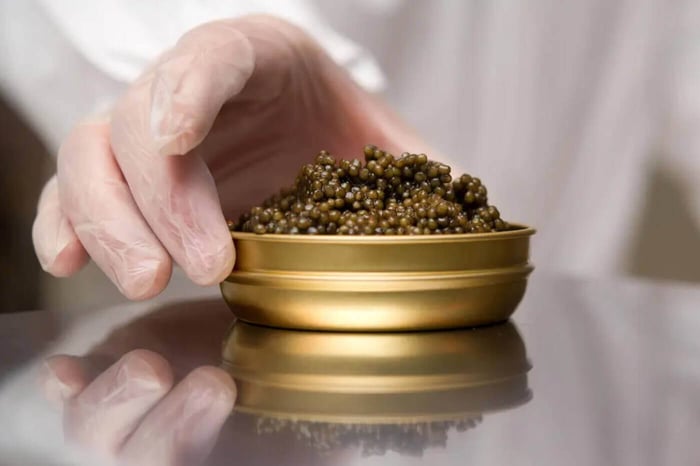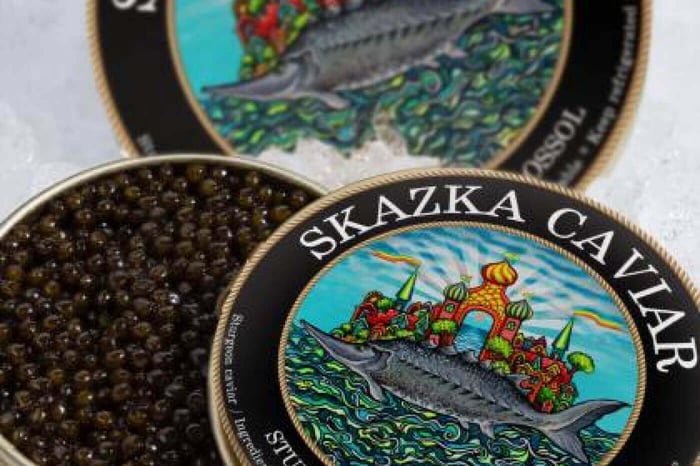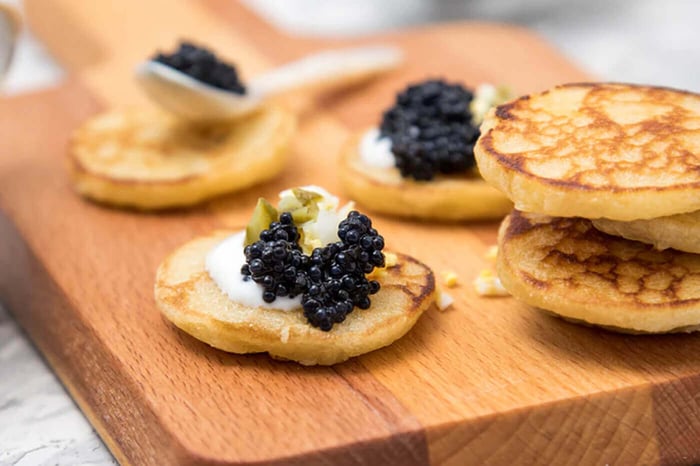 Caviar, often referred to as “black gold,” is one of the most luxurious delicacies in the culinary world. Derived from the roe of sturgeon fish, it has long been a symbol of opulence, tradition, and refined taste. The journey of caviar from the deep waters where sturgeon thrive to the elegant tables of gourmet dining establishments is a fascinating story of history, sustainability, and meticulous craftsmanship. Understanding how caviar is sourced, processed, and delivered not only enhances appreciation for its flavor and texture but also underscores the importance of preserving this centuries-old tradition.
Caviar, often referred to as “black gold,” is one of the most luxurious delicacies in the culinary world. Derived from the roe of sturgeon fish, it has long been a symbol of opulence, tradition, and refined taste. The journey of caviar from the deep waters where sturgeon thrive to the elegant tables of gourmet dining establishments is a fascinating story of history, sustainability, and meticulous craftsmanship. Understanding how caviar is sourced, processed, and delivered not only enhances appreciation for its flavor and texture but also underscores the importance of preserving this centuries-old tradition.
The Legacy of Sturgeon and Caviar
Sturgeon fish have roamed the earth’s waters for over 250 million years, making them one of the oldest surviving fish species. Historically, caviar was enjoyed by the aristocracy of Russia and Persia, and it was once so prized that it was reserved exclusively for royalty. With more than 27 species, sturgeon can be found in both freshwater and saltwater environments, with the Caspian Sea traditionally being the most renowned source. However, overfishing and environmental challenges have threatened wild populations, leading to a renewed focus on sustainable aquaculture practices to meet the rising demand for caviar globally.

Read: Eco-Friendly Sturgeon Farms: A New Era in Caviar Production
Sustainable Sturgeon Farming
Modern caviar production has shifted significantly toward aquaculture to protect wild sturgeon and ensure ethical harvesting practices. Sturgeon farms, located in countries like China, Italy, the United States, and Iran, now dominate the market. These farms provide a controlled environment where the water quality, temperature, and diet are carefully regulated to ensure optimal health and growth of the fish. Sustainability also involves strict adherence to breeding cycles and careful monitoring to minimize environmental impact. As a result, farmed caviar today can rival the quality and flavor of wild-sourced roe, while promoting long-term conservation efforts.
Harvesting the Roe
The harvesting process is both scientific and artisanal, requiring expertise to determine the perfect moment when the eggs are mature but not overdeveloped. Typically, sturgeon are between 8 to 20 years old before they produce viable roe. Once maturity is confirmed—often through ultrasound—the fish is carefully handled to minimize stress. Traditionally, harvesting involved sacrificing the fish, but modern innovations have introduced non-lethal methods that extract the roe while allowing the fish to continue producing in future cycles. Regardless of the method, the roe must be immediately rinsed, sieved, and graded for quality, texture, and size.

Read: Caviar and Art: How Roe Inspires Creative Culinary Presentations
The Art of Caviar Processing
After harvesting, the roe undergoes a delicate process of salting, known as “malossol,” which means “lightly salted” in Russian. This method preserves the caviar while enhancing its natural flavor, without overpowering it. The salting must be done quickly and precisely to avoid altering the texture or taste of the eggs. Once salted, the caviar is packed into tins, either for aging or immediate sale. Aging, typically for a few weeks, allows the flavors to mature and intensify, particularly for high-end varieties. Every step of this process requires expert handling to maintain the integrity and luxury associated with true caviar.

Grading and Packaging for Market
Caviar is meticulously graded based on several criteria including egg size, color, firmness, flavor, and aroma. The highest-grade caviar often comes from species like Beluga, Ossetra, and Sevruga, each offering unique characteristics and commanding premium prices. Once graded, the caviar is packed into vacuum-sealed tins to preserve freshness during storage and transportation. Premium caviar is often labeled by species, origin, and date of harvest, providing traceability and assurance of quality. With increasing global demand, producers are also adopting more sophisticated traceability systems to guarantee authenticity and prevent counterfeiting in the luxury food market.
Serving and Enjoying Caviar
Proper serving of caviar is an essential aspect of the experience. Traditionally, caviar is served chilled on non-metallic spoons—preferably mother-of-pearl or horn—to preserve its delicate flavor. It is often accompanied by blinis, toast points, or boiled eggs, though purists argue that it should be enjoyed on its own to fully appreciate its nuances. The subtle pop and buttery finish of high-quality caviar offer a sensory indulgence that is unmatched. Pairing with Champagne or chilled vodka is common, as these beverages complement and elevate the tasting experience, making every bite a celebration of sophistication.
Conclusion
From the prehistoric depths of ancient rivers to the refined elegance of haute cuisine, the journey of caviar encapsulates a blend of natural wonder, human ingenuity, and cultural heritage. Every stage, from sustainable farming to meticulous harvesting and processing, is a testament to the care and dedication invested in creating this prized delicacy. As global awareness of sustainability grows, so too does the appreciation for ethically sourced caviar that honors both tradition and innovation. Whether savored at a Michelin-starred restaurant or shared among friends, caviar continues to be a symbol of timeless luxury and culinary excellence.
About the Author
 Igor Fishbeyn - Caviar Purveyor
Igor Fishbeyn - Caviar Purveyor
Igor Fishbeyn is purveyor of fine sturgeon caviar and creator of the Skazka Caviar brand. He is an expert with decades of experience specializing in importing, wholesaling, and retailing the finest quality caviar in the world. Igor frequently writes about caviar news and various topics about the caviar industry. He lives in San Francisco with his wife and daughter.
Shop Skazka Caviar
Browse Our Exclusive Caviar Collection
[dib_prod_5322279944351] [dib_prod_5322391584927] [dib_prod_5322633216159][dib_prod_5322609590431]
Shop Caviar By Type
Shop Black Caviar | Shop Red Caviar | Shop Caviar Accessories
Shop Beluga Caviar | Shop Kaluga Caviar | Shop White Sturgeon Caviar
Shop Osetra Caviar | Shop Salmon Roe | Shop Albino Sturgeon Caviar




